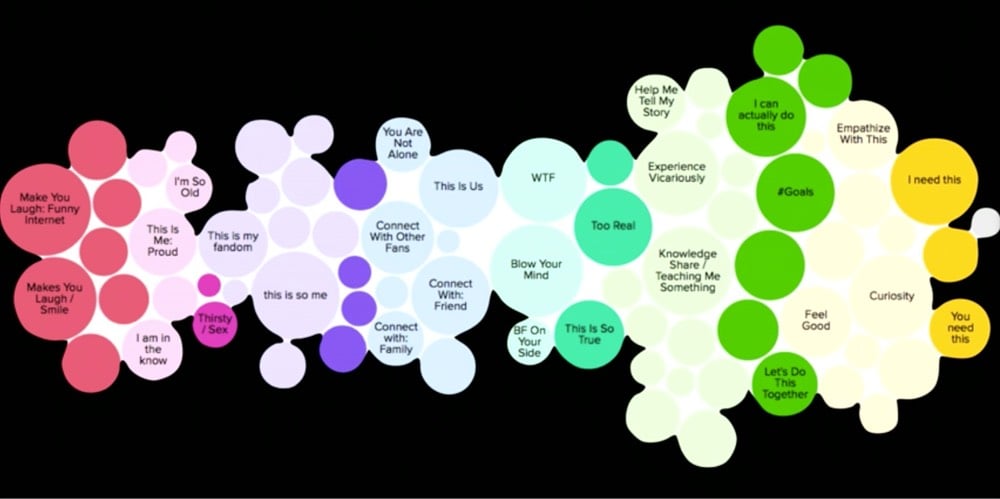Cultural Cartography
In 2017, BuzzFeed’s Publisher Dao Nguyen did a TED Talk about how the company thinks about producing content.
In it, she introduces a system BuzzFeed developed called cultural cartography.
The question I get most frequently is: How do you make something go viral? The question itself is misplaced; it’s not about the something. It’s about what the people doing the something, reading or watching — what are they thinking? Now, most media companies, when they think about metadata, they think about subjects or formats. It’s about goats, it’s about office pranks, it’s about food, it’s a list or a video or a quiz, it’s 2,000 words long, it’s 15 minutes long, it has 23 embedded tweets or 15 images. Now, that kind of metadata is mildly interesting, but it doesn’t actually get at what really matters. What if, instead of tagging what articles or videos are about, what if we asked: How is it helping our users do a real job in their lives?
Last year, we started a project to formally categorize our content in this way. We called it, “cultural cartography.” It formalized an informal practice that we’ve had for a really long time: don’t just think about the subject matter; think also about, and in fact, primarily about, the job that your content is doing for the reader or the viewer.
Here’s what BuzzFeed’s map of their users’ desires looks like:

But as former BuzzFeed employee Matthew Perpetua notes in a post about pop star Lizzo, content can start to feel formulaic if, you know, you use an actual formula to produce it.
I can’t hear Lizzo’s music without recognizing her cultural cartography savvy. A lot of music can achieve these goals without contrivance, often just as a natural side effect of an artist intuitively making resonant work, but Lizzo’s songs all sound very calculated to me. This is not such a bad thing — her skill in expressing herself in relatable ways is a major talent, and I’ve worked with many people who have this natural skill and hold them in very high regard. (I’m much better at telling people who they are rather than asking you to identify with who I am.) Lizzo has a good voice, and her songs range from “pretty good” to “undeniable banger” but I have mixed feelings about all of it because I know the game being played rather well, and because I’m uncomfortable with this self-consciously audience-pleasing approach to content creation becoming the primary mode of pop culture.
All artists who produce work for a large audience (or aspire to) have a method like cultural cartography, though most likely much less formal and more intuitive than BuzzFeed’s system. Some artists are better than others in disguising their methods.





Stay Connected